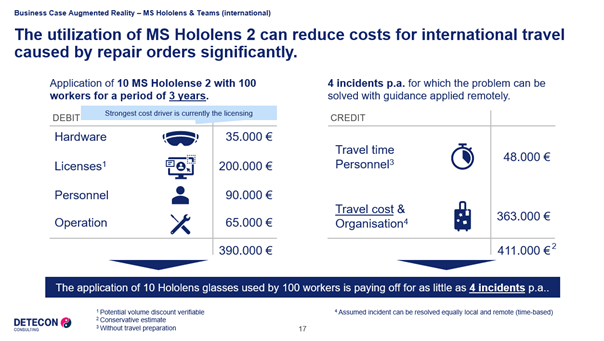Global warming demands immediate action. Digitalization — when used intelligently — is a powerful tool for reducing the CO2-footprint. Companies have a special duty to act. What form should a sustainable digitalization strategy take so that it helps a company along its journey to climate compatibility, sustainability and efficiency?
Climate change is one of the greatest challenges facing humanity. A Planet B with infinite resources where the production of goods can continue as it always has is nowhere to be seen.
Lawmakers and regulators around the world are initiating actions such as the Paris Agreement and the European Union’s Green Deal with the aim of heightening awareness of the need to be more sparing in our use of resources. One target for German industry, for instance, is the reduction of 262 million metric tons of CO2 by 2030 that has been set. This ambitious goal is currently broken down according to various sectors, industries, and companies. The digital industry, for example, has the goal of making its data centers climate-neutral by 2030.
Simply complying with regulatory requirements will not get the job done, however. People and society have called upon us as companies to consider seriously what actions are needed and to act sustainably. In a recent survey, 56 percent of all employees stated that whether or not their employers pursue sustainable policies is important to them. 68 percent of people in Germany believe that industry has a duty to introduce measures for the protection of the environment.
Digital technology as a tool for climate protection
The digital industry and the ICT sector are a part of this discussion as well. On the one hand, digital transformation consumes immense quantities of energy and raw materials for devices, server infrastructure, networks, and much more. On the other hand, there is a great chance that digital technologies in particular will be of tremendous help to us on our journey of emissions reductions. A recent Bitkom study revealed a potential of up to 49 percent that we will be able to realize the required reduction targets with the aid of digital technologies and digital actions. The figure even includes the CO2-footprint for the digital infrastructure. While there are undoubtedly a number of uncertainties and a rebound effect that need to be factored into this potential, the fundamental existence of enormous potential is unquestionable. Used correctly, digital technologies can reduce expected traffic emissions for freight transport by as much as 16 percent simply by implementing intelligent logistics solutions, just to point to one example. Or the expected energy-related emissions in manufacturing can be reduced by up to 8 percent just by utilizing simulations and optimizing physical products and processes.
Let us look at two concrete examples of how the tasks at hand can be solved.

A HoloLens is a pair of augmented reality glasses that allows the user to display interactive 3D projections in the real environment. If an employee — for example, a machine manufacturer — puts on the tool while on a site, experts could remotely control the maintenance or operational startup of a plant and participate virtually in related remote sessions. Travel or flights to the on-site facility would be superfluous. As an example, if we assume a flight of 6,000 kilometers to the scene of the assignment, use of the HoloLens could save around 1.5 tons of CO2 for just this one job. Even if we take into account that 6 tons of CO2 are required to manufacture the HoloLens, implement the infrastructure, and realize the service, this scenario pays for itself after just four assignments.
Another example: The use of water-cooled server infrastructures in a high-performance data center reduces energy consumption in comparison with classic air cooling. Savings as high as 33 percent are realized thanks to reduced power consumption, greater efficiency, and heat recovery.
Viewing climate projects in context
These are examples from actual client projects that Detecon has supported. But sustainability should not be limited to lighthouse projects alone. There is much more to this topic than just creating a “clever” project or initiative. On the contrary, it is about stepping back and seeing in their entirety the interrelationships among all these various projects that are based on an overarching framework so that the greater goal of climate neutrality can be achieved. A sustainable digitalization strategy combines the benefits of digital technology and sustainability requirements into a harmonious whole. It identifies, describes, and implements the relevant levels, is based on an overarching framework, and takes into account the complexity of both technologies and the ecosystem (which is usually extremely diverse).
Furthermore, the sustainability strategy and the comprehensive general program should be highly transparent and understandable. Above all, both should be comparable to other initiatives for two reasons: one, so that benchmarks can be established for an industry (a step that requires compliance with broad framework conditions), and two, so that greenwashing can be prevented! Greenwashing is a term used to describe companies that implement superficial measures in an attempt to appear a little greener and more sustainable. If in doing, however, so they evade the in-depth analyses that are necessary, the root causes never change and the measures become nothing more than hot air.
Establishing a sustainability strategy
How does one go about developing an effective digital sustainability strategy? A good recommendation is to build on a structure that has proven its value in practice. During its client projects, Detecon follows a procedure comprising six essential steps and key questions:
- Scope definition: First of all, the scope of an individual, ecological sustainability strategy must be staked out. A distinction is made among three areas (scopes) — direct emissions, indirect emissions, and emissions arising along the added-value chain — on the basis of the Greenhouse Gas Protocol (GHG). Orientation and goals should be determined very precisely along these lines.
- Environmental baseline: The aim here is to define the baseline. How large is the current CO2 footprint? True, many companies have already calculated their CO2 footprint in one way or another. Taking a closer look at the result is nevertheless always rewarding. Were the relevant data used in the calculations? Was the right level of complexity chosen? Perhaps there is a need to revise or restructure figures to ensure determination of the correct baseline that will serve as the starting point for further discussion and activity.
- Ambition level: How can you be sure that the goals you have set are realistic and feasible? There is often fierce competition on the market to see who can come up with the most ambitious targets. Along comes the next player, who ups the ante and announces an even more ambitious goal. And then nothing happens.This is not the right approach. We recommend finding the goal that is right for you; make it a stretch, yes, but align your goal along industry benchmarks. Perform a detailed analysis of your current situation and decide what you can achieve in the next several years.
- Actions: The task here is to initiate measures, activities, and programs at the right level so that the previously defined goals are actually achieved. The definition of a road map and KPIs and the implementation of monitoring processes are mandatory.
- Governance: Clarify how sustainability can be anchored in the corporate strategy and introduced into a company’s DNA. A strategic mission statement, key roles, incentive creation, and compliance and responsibilities must be clarified.
- Change management: All stakeholders must be convinced that the concept for climate neutrality is workable. Senior management is essential, of course, but employees, customers, and suppliers must all pull in the same direction as well if you are to achieve success. Continuous communication and a culture of continuous learning are required.
This is the approach that Detecon has instilled at T-Systems and other clients, incorporating the sustainability strategy into the corporate strategy, and integrating it into the overall concept of Deutsche Telekom’s sustainability activities.
The time has come to take action. Exploit the immense potential of digitalization and its design options to reduce significantly the emissions so harmful to our climate. Your company will not be the sole beneficiary; your own quality of life and that of the coming generations of employees as well as that of our children and grandchildren is at stake.
I look forward to hearing from you. Let’s talk about how we can combine our efforts to drive sustainability and take action!
The content here is also available as a video.








